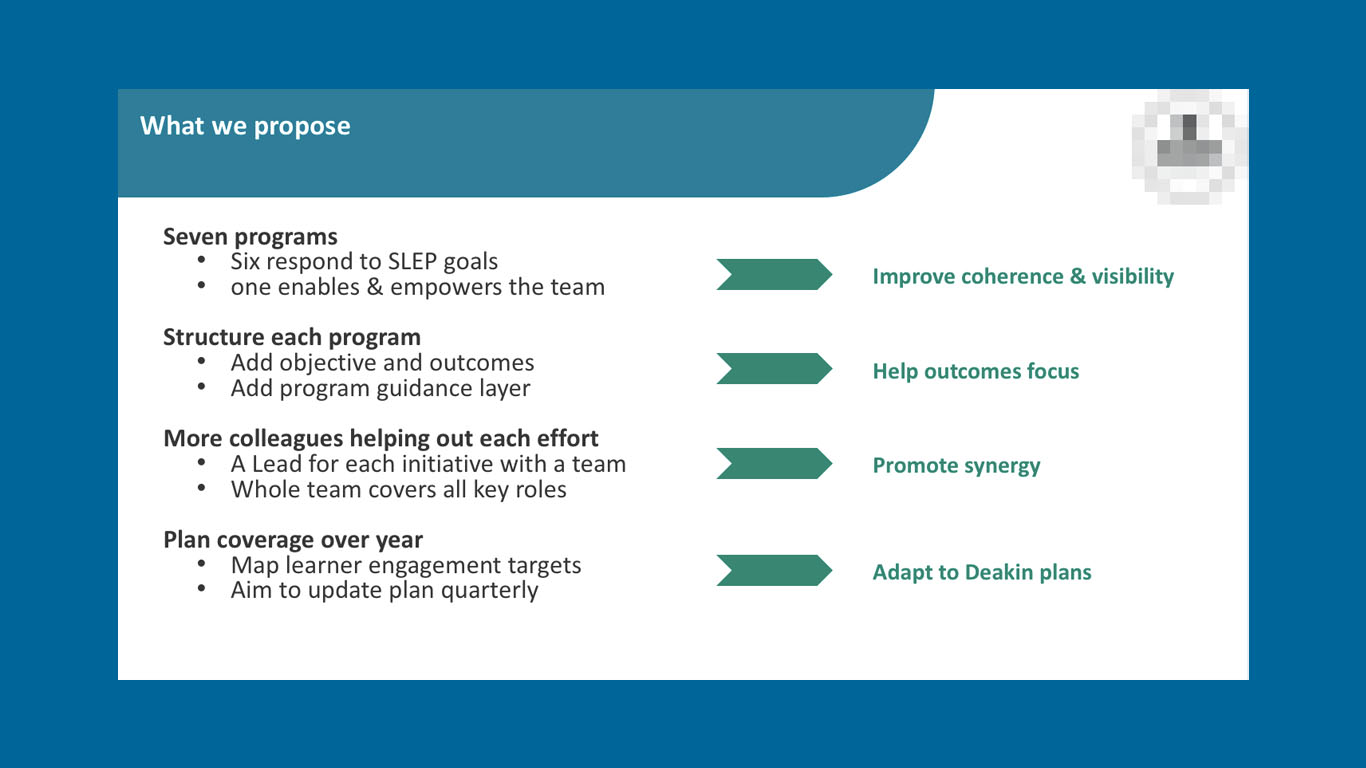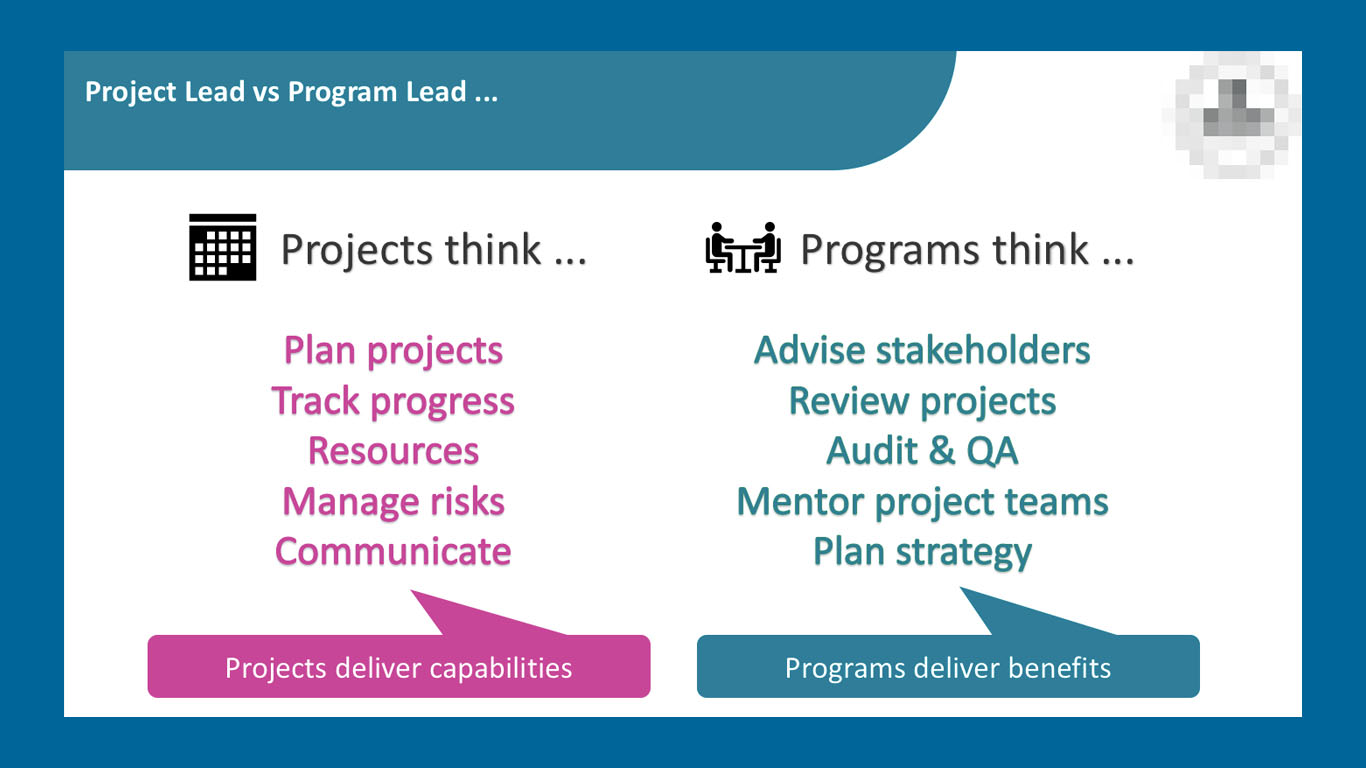Program Approach for team engagement
Our team was working on improving online students’ experience. Online students was a strategic priority area for our organisation and our team grew in size quite quickly. In a year, we were working on 40+ projects, most of them smaller/shorter step change efforts but spread across wide range of stakeholders.
Why a new approach
Despite a number of exciting projects underway, we were facing silos in the team. Different groups in the team were working on their own gigs with little across collaboration. Work distribution was uneven. Some colleagues were across a lot of projects while some weren’t getting enough delegated work.
With bigger teams, it was clear we had to change our way of working. We had to ensure we had the right methods to deliver our plan.
My involvement
My task was to lead a review of our plan with the team to work out the best approach for cohorence and synergy within the team. Work would need to be planned ahead and the workloads were more evenly spread. We also needed more emphasis on prioritising impactful work over internal analyses.
Our bespoke Program Approach
We proposed structuring our work into seven programs - six in response to the organisational strategy and one internal to enable and empower the team.
- Program objectives were aligned to organisational strategy
- New Program Lead role was created in the team - to be nominated for each program
- Projects with shared objectves were gathered into programs to promote better synergies
- Program level thinking was embedded by empowering program teams to take ownership
- Program outcomes were defined as milestones on a timeline
Program Lead role expectations
Program Lead was responsible to ensure they provide leadership within their program to achieve the outcomes. They will be doing so taking a holistic view.
Program Lead was a leadership role. It was additional to normal day to day roles. The objective of calling out leadership at program level was to empower program teams, promote visibility and synergies of related efforts across the team and to put emphasis on the outcomes from coherent projects.
Program Lead’s role expectations:
- Organise and lead progress review meetings
- Encourage focus on delivering outcomes
- Promote synergy and visibility across team
- Ensure goals are met in taget areas such as Learner Engagement Scale (LES)
- Forecast and plan ahead
- Analyse program risks and help remove blocks
- Make program communications easy and transparent
- Represent program with stakeholders
Benefits of the new approach
Mostly, senior staff within the team were nominated as Program Leads. They took it with a sense of prosperity. It provided a pathway to future career progression.
It also resulted in a more interconnected teams. Someone might be leading a program whilst be part of a project team in another program. This structure created highly interconnected teams.
The approach worked well at fixing the problems we were observing especially silos, uneven workloads, unclear impact and inconsistent work pipelines.


